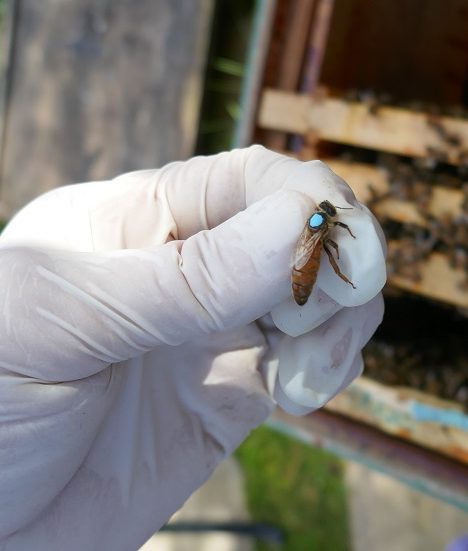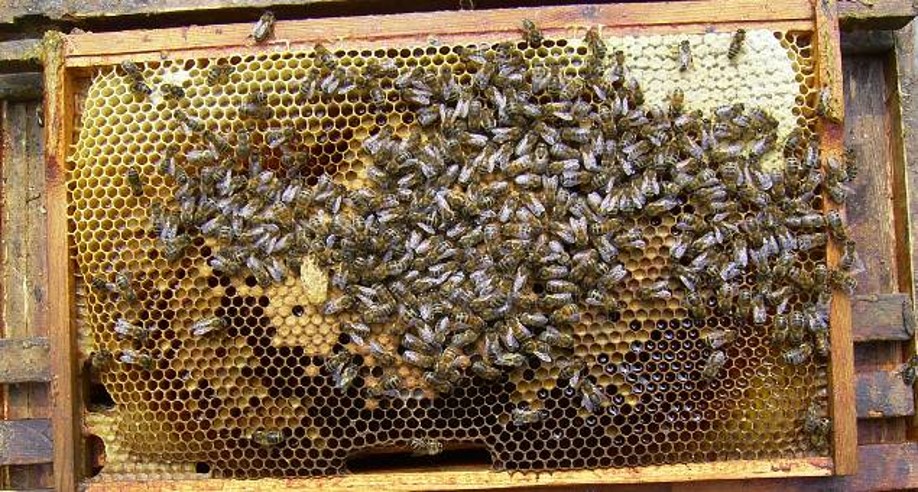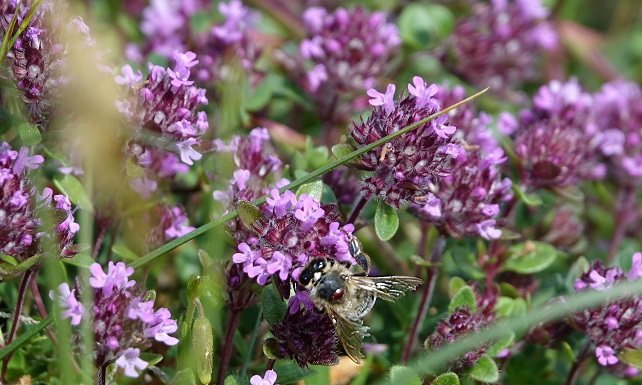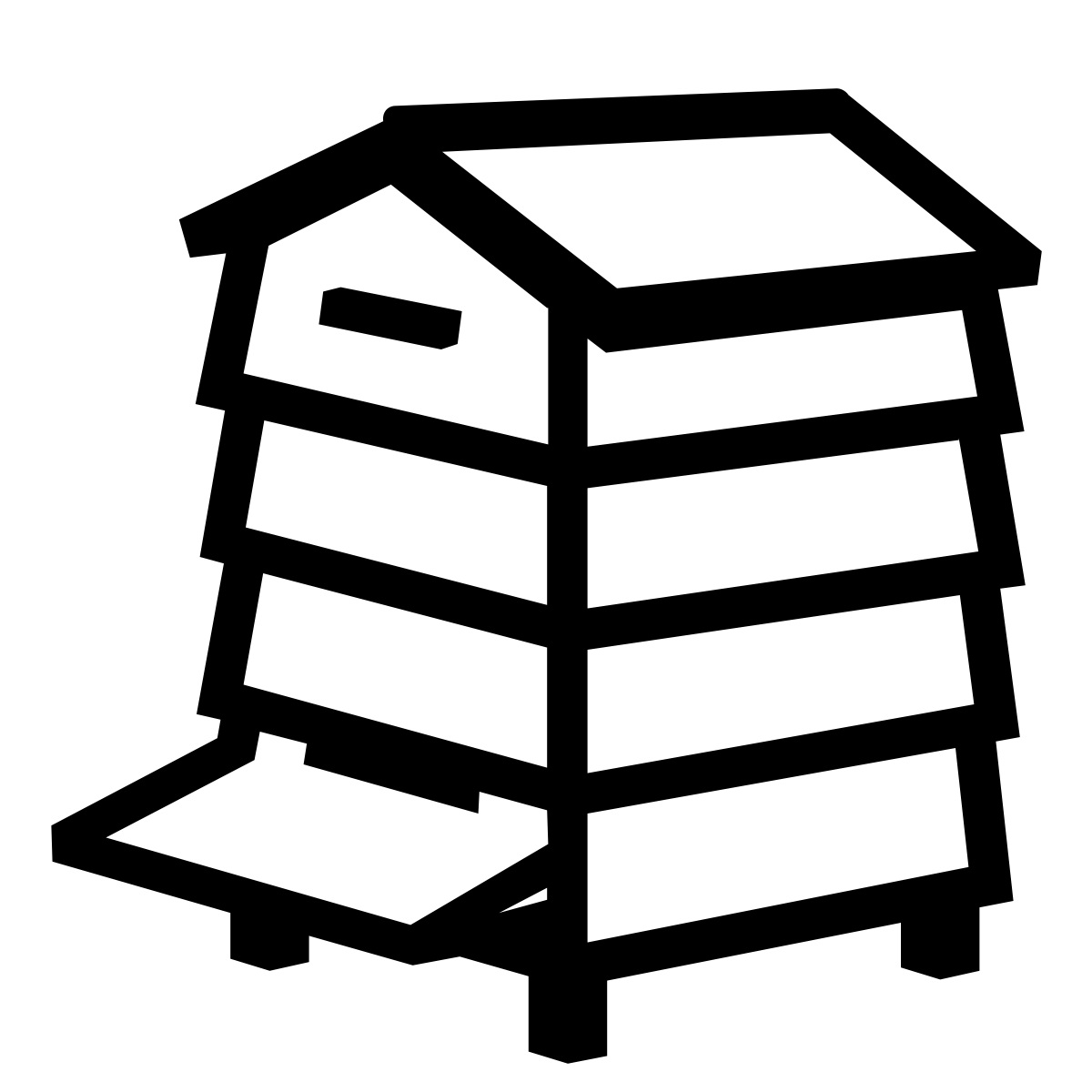
I hope you have all had a good week. It rained a lot here but it is still mild and all the bees were out yesterday at 11 degrees C. Thank you for your commiserations over the my recent unfortunate trip. I’m heading off in a couple of hours on a positive one to Cork via Amsterdam. I’ve had the all clear and a sheet of physio exercises from the orthopaedic clinic, but I am not to drive a car for at least a month. The arm will be in the brace for travel and my luggage is limited to a tiny rucksack. I’ll be having a week’s holiday with Tricia and will make the usual pilgrimage to marvel at the lovely Irish piled high at The English Market.
Supersedure.

Many beekeepers are puzzling the mysteries of why so many of their queens have been superseded this year. We examined queen failure a few weeks ago and I am still researching the topic for a publication for Northern Bee Books that my friend Liz and I are writing together. It is a complex subject with no clear cut answers. Literature reviews lead on to other articles of interest, and answers raise more questions. It feels like entering a rabbit warren and running off down the many different passageways to try and reach daylight again.
It’s really easy in beekeeping to blame failures on something tangible like the weather for poor queen mating. While the reasons are multi-factorial and often not caused by one particular thing, sometimes we need to face the facts and that we might have been able to avoid queen failure. We also need to think about the drone in all of this as it takes two to tango. The quality of drone semen is relevant and the health of drones is key to the process of successful honey bee reproduction.
Perfect Supersedure.
Supersedure in honey bees occurs when the colony of workers makes the collective decision to change their queen. Mostly we have no idea why this is but we might make a guess. Perhaps the queen is old and running out of sperm. Maybe there is a more ominous reason though. Supersedure is an area of which we know very little but Professor David Tarpy and other scientists are currently working hard to increase our growing body of knowledge.
Premature supersedure occurs when a colony decides to replace their queen after less than a year, sometimes after a few months or weeks only.
If the current queen dies before the first supersedure queen emerges from her cell, we call this imperfect supersedure. There is a gap of some three weeks before the new queen has been mated and lays eggs so there is a natural reduction in colony size for a time which can impact honey production. It can also be a problem for beekeepers fulfilling pollination contracts that require consistently strong colonies during the contract period of several weeks when the crop flowers.
Some colonies replace a queen by perfect supersedure and many beekeepers find two queens (mother and daughter) laying eggs near one another in harmony for several weeks or more. Beekeepers prefer this because there is not a gap in egg laying and the colony remains at the same strength, or improved, without the honey harvest being affected. Some beekeepers rear new queens from colonies with a perfect supersedure trait.
Varroa Damages Drone Organs.

Omar1 found that Varroa negatively affects the drone’s body weight and some of his reproductive organs which include the testes, mucus glands, and seminal vesicles. There was a significant correlation between the levels of Varroa infestation and the weight and development of these reproductive organs. We know that Varroa prefer to feed on drone pupae and it is highly likely that this also affects semen and sperm quality because total proteins in haemolymph (bee blood) are reduced in parasitised drones. Apart from a reduction in drone weight, sperm numbers and viability are reduced and so are his attempts at mating flights. It is not just in fertilising the queen that semen is key. Semen carries proteins, enzymes and other components that switch on genes for the queen after mating and transfer of sperm to the spermatheca. In a complicated process, semen is responsible for triggering reproductive functioning and queen performance.
Proof of Damage.
How do we know that high Varroa infestations influence supersedure? Well, an interesting study by Cargel and Rinderer in 20092 reveals some informing facts that might help us improve queen success. Dr Rinderer responded to concerns about the recent rise in reported cases of supersedure following the introductions of new queens. He discovered that Italian honey bees, Apis mellifera ligustica, are very susceptible to varroa and appear to be more affected by supersedure and queen failure rates than other sub-species of the Western honey bee.
The study involved making up small colonies in nuclei and observing 34 highly Varroa- infested queenless colonies, and 27 low level Varroa-infested queenless colonies. Queens were added to each of these units. Varroa levels were first assessed laboriously in five ways.
- Mites were counted in 200 worker cells from 2 brood frames (50 cells from each side of frame).
- Mites were counted in 50 sealed drone cells of one brood frame (25 cells from each side).
- Soapy washes of samples (300-600 adult bees) were performed whereby mites and bees were counted.
- Comb by comb estimates were made of the numbers of sealed worker and drone brood cells (to the nearest 5%).
- Comb by comb assessment, to the nearest 5%, of the numbers of bees that made up the colonies.
Five highly infested colonies died in the first 3 weeks because their queens failed and they didn’t produce successful supersedure queens. 9 more colonies in this group lost the introduced queens and were in the process of superseding them during this time.
After 6 weeks, of the 29 remaining highly infested colonies, 15 colonies had produced supersedure queens or were in the process of doing so. Of the 27 low infested colonies, 10 produced supersedure queens or were in the middle of doing so. The difference is significant and the authors conclude that although increased queen loss has multiple causes, some conditions such as Varroois have increased over the years to negatively impact queen success. Varroa was quite well controlled by chemicals in the beginning but ongoing overuse has created resistance and stronger Varroa. It is much harder to control Varroa today, and lower infestation rates cause more problems than they did even a decade ago.
Practical Application.
The evidence is convincing enough for us to work hard at keeping colony Varroa levels below the threshold of harm which is currently 1000 mites /colony4. Monitoring is key and if a beekeeper is not doing regular assessments such as alcohol wash tests/sugar roll tests how will they know when a colony is being harmed and reproduction is at risk?
Using the information in practical application the beekeeper might check Varroa levels before dividing a colony for requeening and treat as necessary. If there is an unexpected premature queen supersedure (not an old queen at the end of her productive life) mite levels can be checked quickly and treatment given.
I can highly recommend Kirsty Stainton’s book on Varroa management3, especially for inexperienced beekeepers, and BeeBase4 for guidance for safe threshold levels and management throughout the year. The ideal situation is to select for colonies that can defend themselves against Varroa so that they are not dependent on varroacides, but this does not happen overnight and needs careful and deliberate management. However, it can be successfully achieved as demonstrated by Westerham Beekeepers, https://www.beelistener.co.uk/beekeeping/developing-varroa-resistant-bees-steve-rileys-guest-blog/
1 Omar, R. (2017)Effect of Varroa Infestation on the Development and Body Weight and Some Reproductive Organs of Honey Bee Drones, Apis mellifera l. Middle East Journal of Applied. 7. 272-279.
2 Cargel, R, & Rinderer, T. (2009) Effects of Varroa Destructor Infestation on Honey Bee Queen Introduction, Science of Bee Culture, February 2009, Vol.1, No 1, pp8-13.
3 Stainton, K. (2022) Varroa Management: A Practical Guide on How to Manage Varroa Mites in Honey Bee Colonies, Northern Bee Books.

Interesting article, thanks for your thoughts.
I would guess we do naturally select for varroa resistant/ tolerant bees when stopping treatment. Only the fittest and strongest that can handle the mites would reproduce.
But from what I have seen, a “natural” sized cavity that triggers swarming earlier than what we usually want and the brood break that comes with it is probably what helps. It’s definitely an advantage not only for getting rid of mites, but also other brood diseases..?
If they have to find a strategy for getting rid of mites they will find one. If we treat all the time, why should they bother?